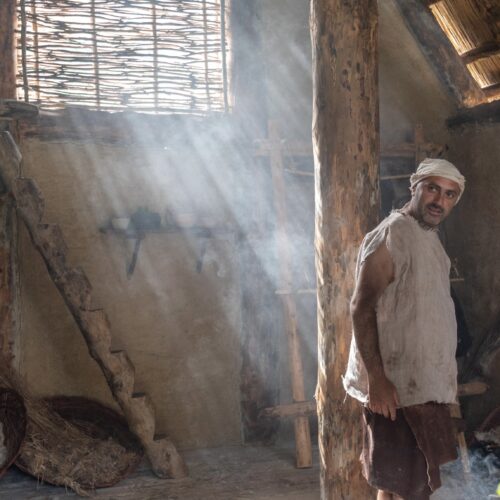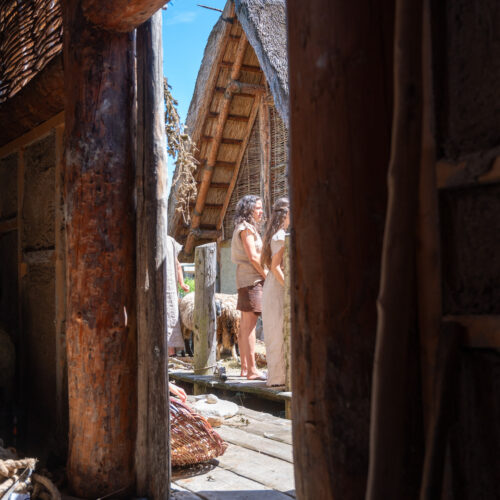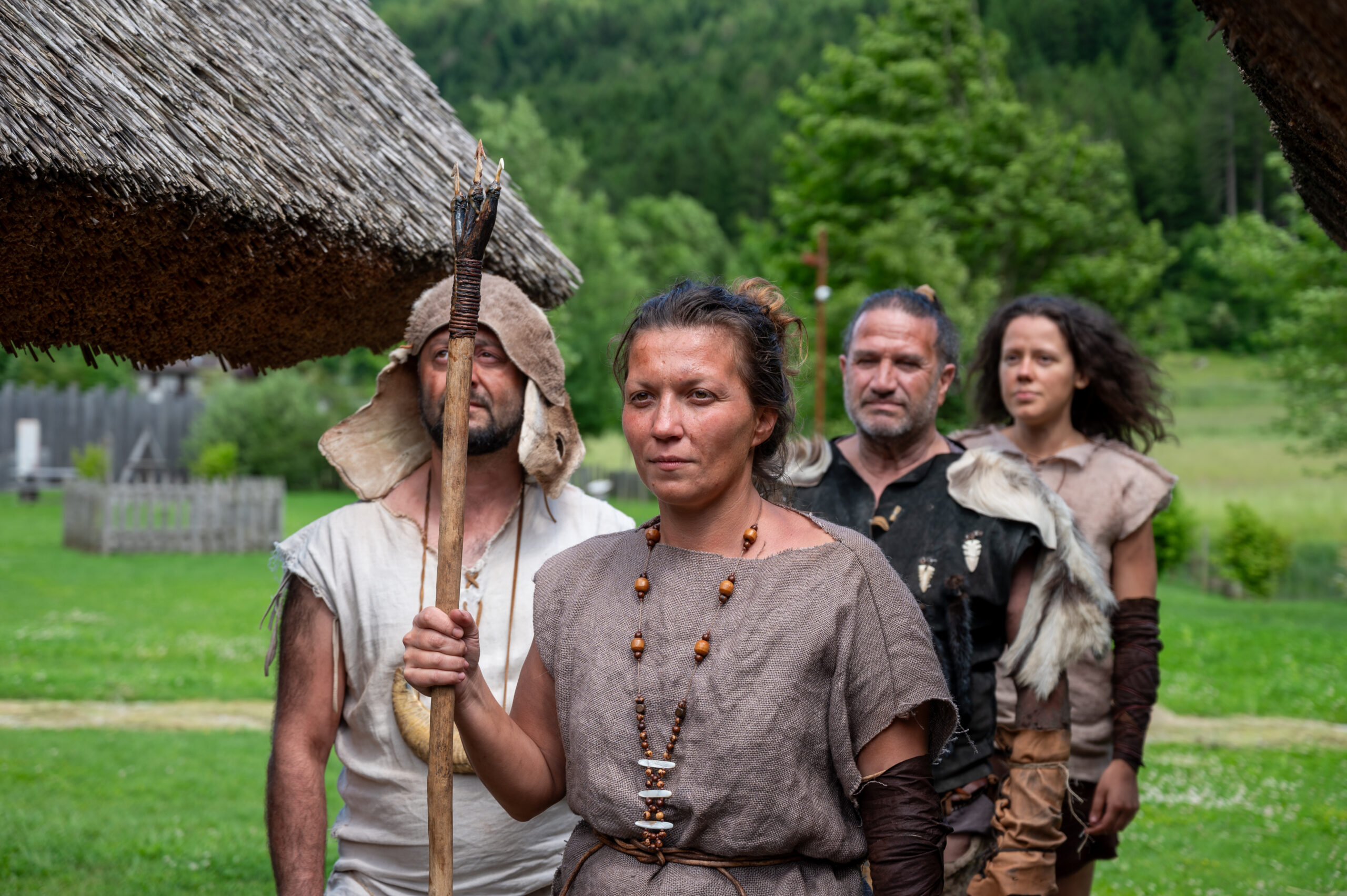Antiche tracce. La vita in palafitta
Municipality of Desenzano del Garda
- Municipality of Desenzano del Garda
OUR SERVICES
- Content Production
- Video Production
- Sound Design
An extraordinary opportunity to discover and enhance the archaeological heritage of the UNESCO pile-dwelling sites in northern Italy through a combination of modern technology and immersive storytelling


After the first scenes set outdoors, where the activities of fishing, handicrafts and pile building are described, the scene shifts to one of the village huts to film characters intent on other tasks, such as weaving, making butter and grinding grain. The protagonist – followed by a dedicated camera – gives narrative continuity to the short film and accompanies the viewer as the settings unfold.
Through the use of multi-camera shots, the scene is observed from several angles and the concept of VR editing is interpreted in a completely new way, changing the point of view according to the narrative.
In order to eliminate disturbing elements (public furniture, lighting fixtures, the operators themselves or supporting equipment) or roads and buildings, in the most panoramic shots, ultra-high-definition CGI (Computer-generated Imagery) post-production interventions were carried out, which, by means of Artificial Intelligence algorithms, reconstruct and correct even the smallest details.
Specifically, each narrative is divided into four parts: an initial overall geographical overview, showing the position of the archaeological sites on the map, is followed by a focus on the individual area to be investigated, to continue with the reconstruction of the objects used for the specific activity represented, thanks also to the work of professional actors, in the finale.

The peculiarity of the short film is the absence of a narrator’s voice or dialogue. This stylistic choice stems from the idea of giving more space to images and a visual type of narration. The elements that emerge, in fact, are gestures, movements and non-verbal language that gives the final spectator a simple but impactful tale. A peculiar ‘sound design’ work was also necessary, built on the sounds of elementary music expressed by flute and percussion, which nevertheless leaves room for ambient noises. At the same time, significant post-production work was carried out to eliminate disturbing ‘modernity’ elements (benches, signs, lighting) or roads and buildings in the more panoramic shots.
At the end of the short film, a map identifies the UNESCO archaeological sites in the overall context and provides access to content in Computer-Generated Imagery. Each municipality of the project (Desenzano del Garda, Ledro, Fiavé, Monzambano, Polcenigo, Arona, Lonato del Garda and Arquà Petrarca.) is matched with a faithfully reconstructed and representative object (a canoe, a plough, etc.), for a total of eight different insights. Each CGI is accompanied by a voice over in two languages (Italian/English).
